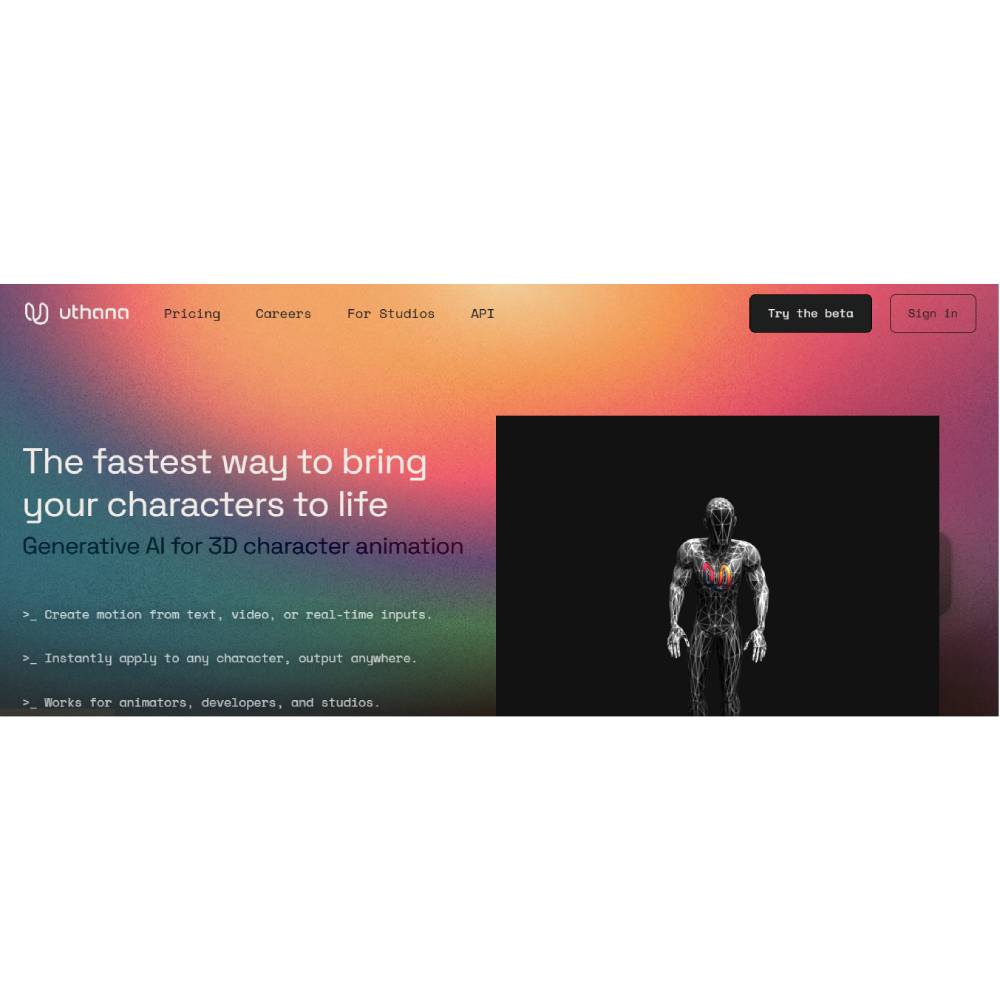

Uthana – AI Procedural Animation and Physics Simulator
Uthana is a groundbreaking AI-powered procedural animation and simulation system that redefines motion design across film, gaming, robotics, and virtual production. Designed to automate physical realism, Uthana eliminates the manual burden of traditional rigging, keyframing, and dynamic solving. Artists can simply define an intent—walk, run, collide, interact—and Uthana’s neural solvers calculate realistic body dynamics, balance, inertia, and environment-aware movement in real time. It adapts to each scene’s context, whether it’s a character stepping onto uneven ground, fabric reacting to wind, or an object colliding mid-air. Built for studio-grade production, it uses reinforcement learning models trained on human biomechanics, physics, and cinematic motion datasets. Uthana doesn’t just reproduce motion—it understands physicality. Its AI-driven motion engine integrates with major DCC tools like Maya, Blender, Unreal Engine, and Houdini, enabling teams to simulate everything from character animation to large-scale destruction sequences. Every animation remains editable, procedural, and synchronized to artistic direction. For creative professionals, this means faster iteration, superior accuracy, and a massive reduction in simulation time. Uthana transforms every frame into a dynamic, physically consistent performance without sacrificing artistic control.
